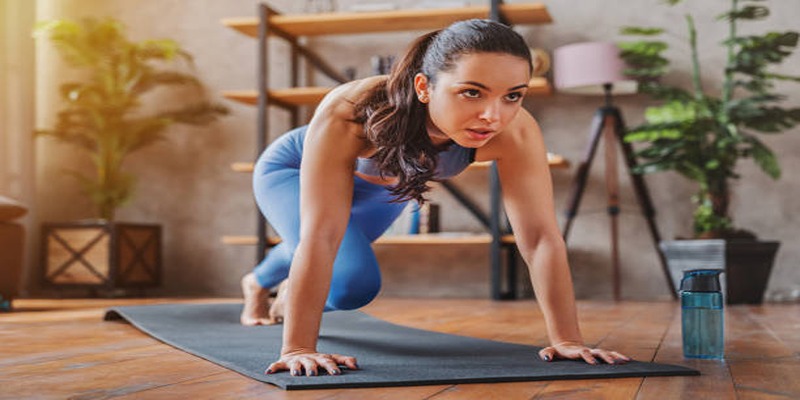Flexibility is an important part of staying healthy, but it’s easy to overlook. Being flexible helps you move better, reduces the risk of injuries, and supports your overall fitness goals. Whether you’re an athlete or just starting your fitness journey, keeping your body flexible is a key step to improving strength, balance, and daily movement.
Why Flexibility Shouldn’t Be Overlooked

Enhances Performance Across Workouts
Flexibility allows your joints and muscles to move seamlessly through a greater range of motion. This can significantly improve performance in virtually any activity, whether you’re lifting weights, running, swimming, or dancing.
For instance, weightlifters who maintain flexibility in their hips and shoulders will find it easier to achieve proper forms like deep squats and overhead presses. Runners with limber hamstrings often experience better strides and reduced cramping. No matter your fitness activity, better flexibility can amplify your performance.
Reduces Risk of Injuries
One of the most compelling reasons to prioritize flexibility is injury prevention. Stiff or tight muscles are more prone to strains, tears, and pulls. When your joints and muscles have greater mobility, they are less likely to be overstressed during dynamic movements.
For example, tight hip flexors or hamstrings can lead to lower back pain and an increased risk of injury during high-impact exercises. Regularly incorporating stretches or yoga sequences can loosen these areas, protecting your body while keeping you active.
Supports Long-Term Mobility
Functional mobility is critical as you age. Flexibility ensures you can perform daily activities like bending over, reaching for objects, or climbing stairs with ease. Neglecting flexibility now can lead to stiffness later, impacting your quality of life as you get older.
Consider flexibility as a tool to future-proof your fitness. By building and maintaining it today, you are setting yourself up for a more agile and independent future.
The Benefits of Adding Flexibility Training
Improved Posture
A sedentary lifestyle and poor posture can lead to tight muscles, particularly in your neck, shoulders, and back. Over time, this tightness contributes to slouching and discomfort. Flexibility exercises help lengthen and relax these muscles, promoting better posture and reducing related aches or pains.
Faster Recovery
Ever felt sore after an intense workout? Flexibility training, like stretching and foam rolling, can enhance blood flow to your muscles, helping reduce soreness and speed up recovery. Yoga, in particular, is amazing for releasing muscle tension and eliminating waste products like lactic acid after demanding workout sessions.
Boosts Mental Relaxation
There's more to flexibility than physical benefits. Stretching exercises and yoga are excellent for mental relaxation too. Incorporating flexibility training into your routine can help lower stress levels, improve focus, and even enhance sleep quality. Deep stretching activates your parasympathetic nervous system, signaling the body to relax and unwind.
How to Incorporate Flexibility Into Your Fitness Routine
Step 1: Add Dynamic Stretches to Your Warm-Up
Before you jump headfirst into your workout, take 5-10 minutes to include dynamic stretches during your warm-up. Unlike static stretches, which are held in one position, dynamic stretches involve controlled movements that prepare your muscles and joints for activity.
Examples include leg swings, arm circles, and walking lunges with a twist. These stretches improve your flexibility while increasing your heart rate and preparing your body for exercise.
Step 2: Cool Down with Static Stretches
After your workout, set aside time for static stretching to cool down and prevent tightness. These stretches involve holding a single position for 15-30 seconds to lengthen the muscle. Key areas to target include your hamstrings, quads, hip flexors, and shoulders.
A simple post-workout stretching flow may include moves like a seated forward fold, pigeon pose, or a deep side stretch.
Step 3: Dedicate a Day to Flexibility Training
If flexibility isn’t on your radar, consider dedicating a day specifically to it in your weekly fitness schedule. Enroll in a yoga class, follow an online mobility flow, or spend time engaging in deep stretching or resistance band work.
Over time, you’ll notice significant improvements in your range of motion, and your other workouts will feel noticeably smoother.
Step 4: Keep Moving Throughout the Day
Sitting at a desk all day can wreak havoc on your flexibility. To counter this, aim to do quick mobility exercises during break times. Shoulder rolls, neck stretches, and standing hamstring stretches are easy to do anywhere and can prevent stiffness from setting in.
Step 5: Try Foam Rolling
Foam rolling is an underrated method for improving flexibility. By applying gentle pressure to areas like your IT bands, calves, and upper back, foam rollers help release muscle tightness and improve your range of motion over time. Use a foam roller before or after your workout for the best results.
Step 6: Be Consistent
Like any fitness goal, consistency is the key to success. Make a commitment to incorporate flexibility exercises at least three times a week, even if only for 10-15 minutes per session. Over time, you'll see (and feel) amazing rewards for your efforts.
Common Myths About Flexibility

Myth 1: Flexibility is Only for Yogis and Gymnasts
It’s a common misconception that flexibility training is only valuable if you’re aiming to perform splits or advanced yoga poses. Flexibility benefits everyone and is essential for all types of fitness activities, from lifting weights to running marathons.
Myth 2: You’re Either Flexible or You’re Not
Anyone can improve their flexibility over time with consistent training, regardless of whether you’re naturally limber. The truth is, flexibility is a skill that can be developed, just like strength or endurance.
Myth 3: Stretching Isn’t Necessary for Strength Training
A lot of gym-goers mistakenly skip stretching after lifting weights. However, flexibility training complements strength training by preventing muscle imbalances and improving joint function.
Conclusion
Flexibility isn’t just a bonus—it’s key to reaching your fitness goals. Want to lift heavier, avoid injuries, or feel better in your body? Flexibility training is your answer. Start small: add stretches to your routine, join a yoga class, or spend 10 minutes with a foam roller. These simple habits can lead to big improvements, supporting not just short-term gains but long-term health and vitality.












